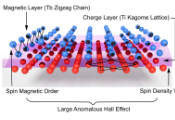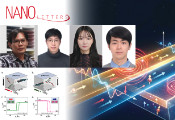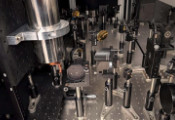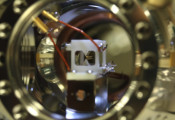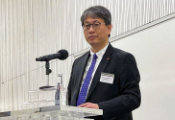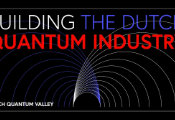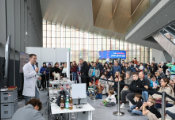European Scientists Are Using Diamonds to Build a New Quantum Computer
November 8, 2024 -- European scientists are using diamonds to build a new quantum computer that works without needing to be cooled to ultra-low temperatures. This technological approach promises to make quantum computers more practical and scalable, leading, for example, to faster development of life-saving drugs and more powerful optimisation algorithms in the finance sector.
A €10 million consortium funded by the European Commission and supported by the Quantum Flagship is using diamonds and silicon carbide to build quantum computers and quantum simulators that can run at room temperature, increasing their usability and opening up new avenues for hybrid computing applications.
Called SPINUS, the project is developing quantum simulators that can tackle incredibly complex problems, such as understanding how materials behave at the atomic level. These are problems that regular computers would struggle to solve quickly or accurately. Quantum simulators, however, can handle them with ease.
While quantum computers exist, most require ultra-cold temperatures near absolute zero, or -273°C (-460°F), making them huge, cumbersome, and energy-intensive.
The SPINUS team is exploiting a natural imperfection inside diamonds to make programmable quantum bits or qubits—the basic building blocks of quantum computing. This approach has the advantage that it requires no extreme cooling and works at room temperature.
Project coordinator Martin Koppenhöfer says: “These are not the type of diamonds you’d find in a ring; they’re synthetic, specially engineered for quantum technologies.”
A special type of microscopic imperfection, called a ‘nitrogen-vacancy’ (NV) centre, is formed by removing two adjacent carbon atoms from the diamond’s crystal structure; one of them is replaced by a nitrogen atom, leaving a missing carbon atom (a vacancy) right next to the nitrogen atom that can capture an electron. By sending laser pulses into the diamond, light interacts with the NV centre, allowing scientists to control the spin of the electron and use them as qubits.
“In natural diamonds, such imperfections occur randomly, but in our ultra-pure synthetic crystals, which are lab-grown in a matter of days to weeks, we can control the amount and position of the NV centres. This creates a unique setup in the diamond’s atomic structure that has special properties for quantum computing. The NV centres behave like tiny trapped atoms where electrons and nearby nuclear spins can be controlled. This allows us to store and process quantum data in more efficient ways than on conventional computers.”
While SPINUS is working to demonstrate quantum simulators with more than 50 qubits and quantum computers with over ten qubits, the team expects that their research will provide a strategy to scale up to over 1000 and 100 qubits, respectively, within five years post-project.
In addition to room-temperature operability, spin defects in diamonds can store quantum information over very long times compared with other architectures for quantum computing (e.g., superconducting qubits), and they can be highly miniaturised. To build such a miniaturised quantum processor, current approaches to control and read out the NV centres need to be improved. However, the SPINUS project is developing a novel modular strategy to build scalable diamond-based quantum computers, along with cutting-edge electrical readout techniques.
“Making a quantum simulator with more than 50 qubits and a room-temperature quantum computer opens the door to scaling up to a higher number of qubits, like 100 or 1000, which would be a game-changer for areas like cryptography, AI, and materials science. This capability would allow scientists to discover life-saving drugs faster, solve hard optimisation problems, or develop energy-saving technologies more efficiently,” says Koppenhöfer.
Set to conclude in 2027, the SPINUS project brings together a consortium of Europe’s leading research institutions and quantum technology experts. Coordinated by the Fraunhofer Institue for Applied Solid State Physics IAF, the project partners are the University of Ulm and University of Stuttgart as well as the Forschungszentrum Jülich and Quantum Brilliance GmbH in Germany, Hasselt University in Belgium, Linköping University in Sweden, the Technical University of Denmark, Wigner Research Center for Physics in Hungary, Bruno Kessler Foundation in Italy, Delft University of Technology in the Netherlands, and AMIRES s.r.o. in the Czech Republic.


